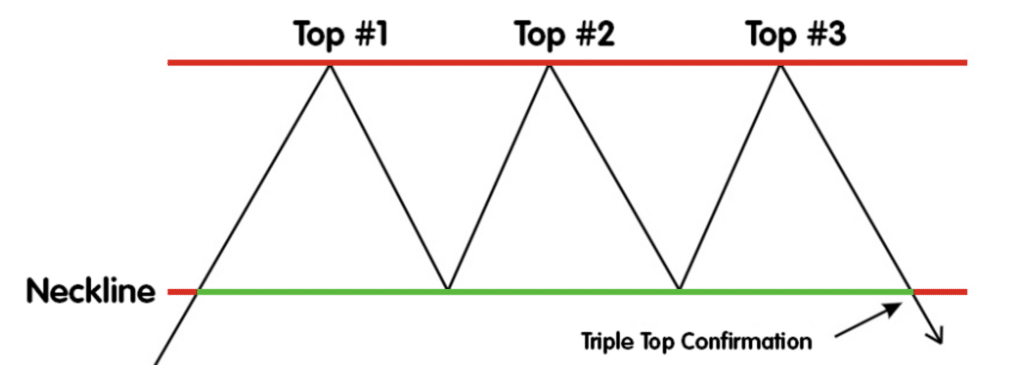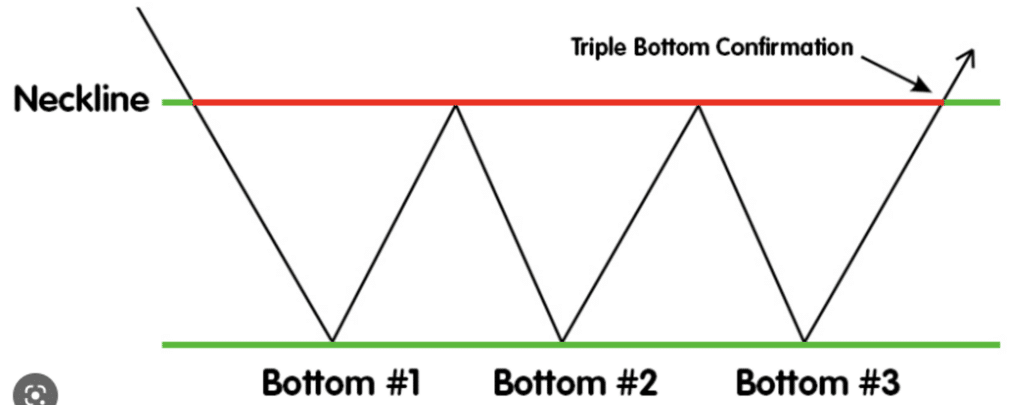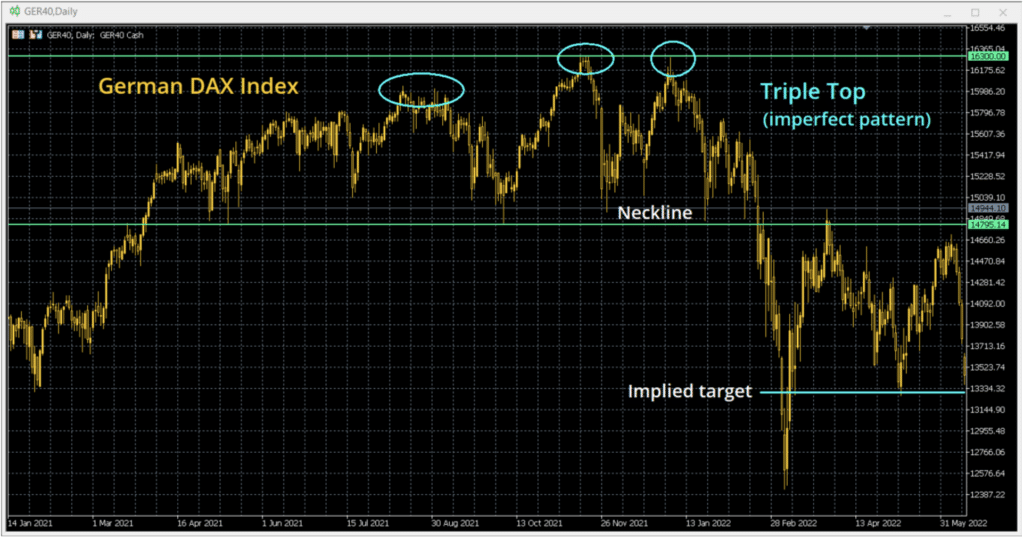What are Triple Tops and Triple Bottoms
Triple Tops and Triple Bottoms are identifiable as price patterns. Once the pattern has completed following a breach of the neckline, they come with measurable implied targets for the subsequent price move.
Triple top pattern – After a sustained move higher in price, there is a peak and a move lower. This initial move lower finds support before picking up again. However, the price finds resistance around the first high to form a second peak of similar magnitude to the first. A second move lower holds support around the first low before rallying again. However, once more the price fails to break the resistance of the two previous peaks before falling back again to leave a third peak. This time the support of the first two lows is breached. This breakdown below the “neckline” completes the triple top.

Triple bottom pattern – This is the opposite pattern of the triple top. A sustained move lower finds support before rallying, which leaves a trough in the price. A bull failure leaves resistance as the price falls away to retest the low. However, the support of the low holds firm inducing another rebound. This fluctuation continues, to leave three troughs in the price before the final rally through the resistance. Breaking through the “neckline” completes the pattern.

Waiting for completion… and confirmation
Trading before a pattern has been completed is a risky strategy. For example, a double top could turn out to be a triple top, or even a consolidation rectangle. The top pattern is still building and valid, but the trader could be stopped out by trading too early.
We believe that it is important to wait for a reversal pattern to be completed before taking any trading signals. An intraday breach can complete a pattern, but waiting for confirmation would be better. A closing breach of the neckline (preferably a two-day close) helps to confirm a completed pattern.
Implied targets
The implied targets for Triple Tops and Triple Bottoms are similar to those of other top patterns. The magnitude of the reversal is measured and then projected from the neckline.
- Triple Tops – Measure the size of the peaks to the reaction lows. The neckline is the support line. Once this has been broken, we can measure the move lower from the neckline.
- Triple Bottoms – Measure the depth of the troughs to the resistance. The neckline is formed on the breakout above the resistance.

Aborting the pattern
Once the neckline has formed and the pattern completed, if there is a retracement through more than half of the magnitude of the peaks (triple top) or troughs (triple bottom), then this would abort the pattern.
Variations
Remember technical analysis is an art, not a science. In reality, the patterns are not always how they appear in textbooks. For example, it would be extremely rare and unlikely to get the textbook perfect three peaks and identical reaction lows for a Triple Top. Therefore, we need to be on the lookout for variations of Triple Tops and Triple Bottoms that may not look picture-perfect but are still relevant as reversal patterns.
Variations include:
- The heights of the peaks on a triple top may vary, or the troughs on the triple bottom are different.
- The peaks on a triple top (or troughs on a triple bottom) may be stretched out over a longer period.
The key is to remember what reversals are. Reversals are changes in market direction and we are looking for a key change in trend.
- For a triple top, we are looking for a failing uptrend, key resistance forming and the resistance being retested more than once before the market falls back. The failure of the key support completes the pattern.
- For the triple bottom, traders are looking for a downtrend turning higher. Key support then forms and holds after being tested several times. The move above key resistance completes the reversal and signals a decisive change in market sentiment.